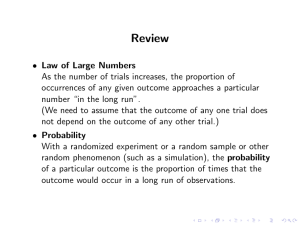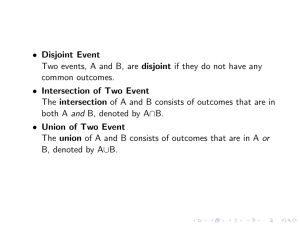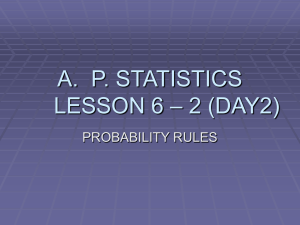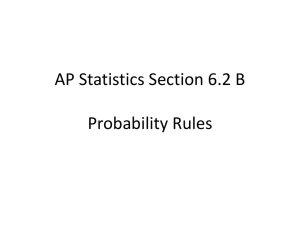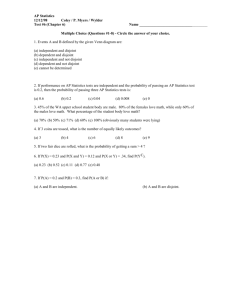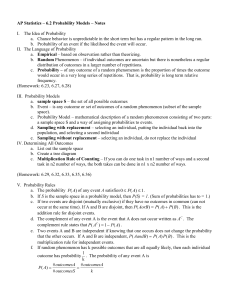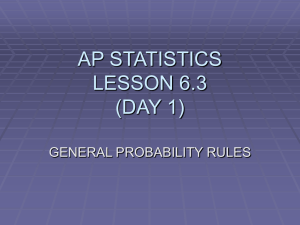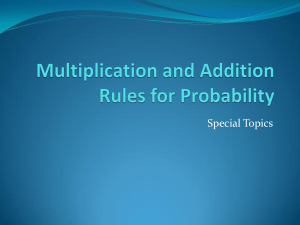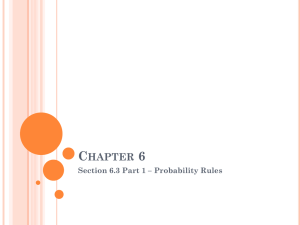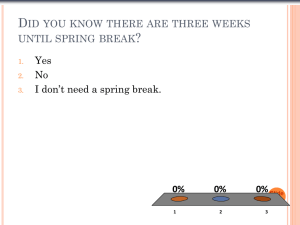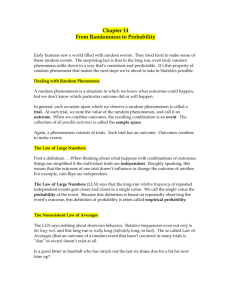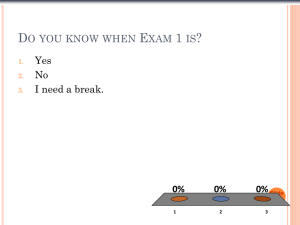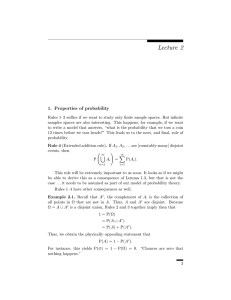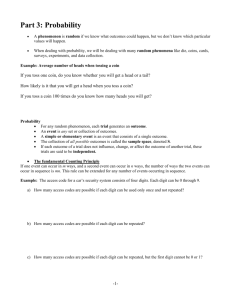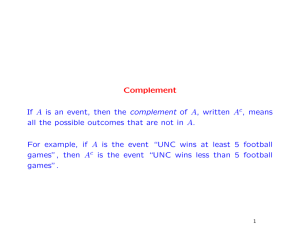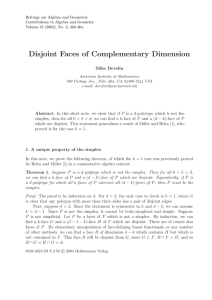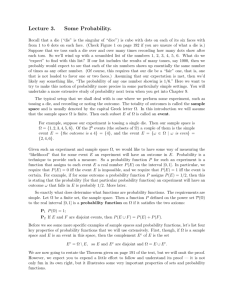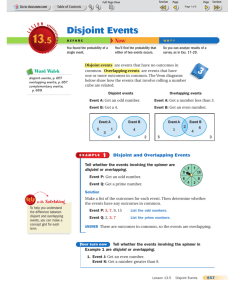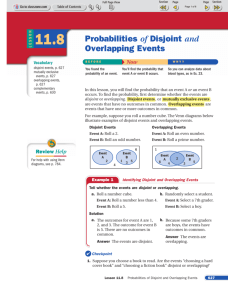Probability Models
advertisement
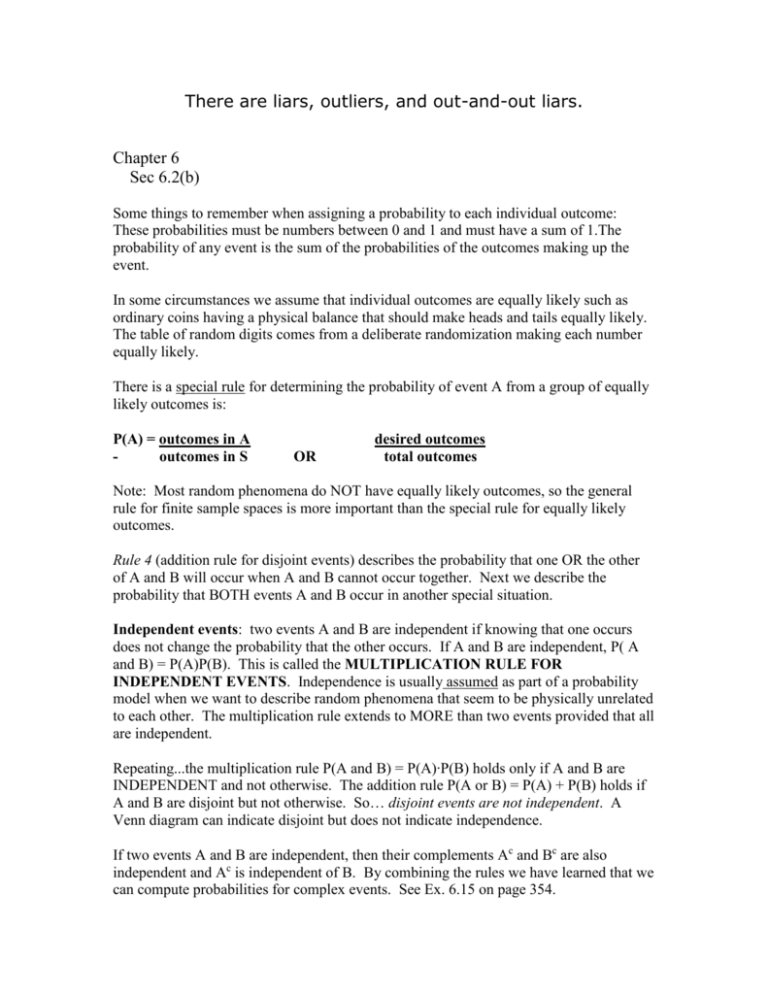
There are liars, outliers, and out-and-out liars. Chapter 6 Sec 6.2(b) Some things to remember when assigning a probability to each individual outcome: These probabilities must be numbers between 0 and 1 and must have a sum of 1.The probability of any event is the sum of the probabilities of the outcomes making up the event. In some circumstances we assume that individual outcomes are equally likely such as ordinary coins having a physical balance that should make heads and tails equally likely. The table of random digits comes from a deliberate randomization making each number equally likely. There is a special rule for determining the probability of event A from a group of equally likely outcomes is: P(A) = outcomes in A outcomes in S OR desired outcomes total outcomes Note: Most random phenomena do NOT have equally likely outcomes, so the general rule for finite sample spaces is more important than the special rule for equally likely outcomes. Rule 4 (addition rule for disjoint events) describes the probability that one OR the other of A and B will occur when A and B cannot occur together. Next we describe the probability that BOTH events A and B occur in another special situation. Independent events: two events A and B are independent if knowing that one occurs does not change the probability that the other occurs. If A and B are independent, P( A and B) = P(A)P(B). This is called the MULTIPLICATION RULE FOR INDEPENDENT EVENTS. Independence is usually assumed as part of a probability model when we want to describe random phenomena that seem to be physically unrelated to each other. The multiplication rule extends to MORE than two events provided that all are independent. Repeating...the multiplication rule P(A and B) = P(A)∙P(B) holds only if A and B are INDEPENDENT and not otherwise. The addition rule P(A or B) = P(A) + P(B) holds if A and B are disjoint but not otherwise. So… disjoint events are not independent. A Venn diagram can indicate disjoint but does not indicate independence. If two events A and B are independent, then their complements Ac and Bc are also independent and Ac is independent of B. By combining the rules we have learned that we can compute probabilities for complex events. See Ex. 6.15 on page 354. Probability thus far... a) a random phenomenon has outcomes that we cannot predict but that do have a regular distribution in many repetitions b) the probability of an event is the proportion of times the event occurs in many repeated trials c) a probability model consists of a sample space S and an assignment of probabilities P d) the sample space S is the set of all possible outcomes e) P assigns a number P(A) to an event A f) the complement of Ac consists of exactly the outcomes that are NOT in A g) A and B are disjoint (mutually exclusive) IF they have no outcomes in common h) A and B are independent if knowing one event occurs does not change the probability of the other. Five Rules so far... 1) All probabilities lie between 0 and 1. 2) P(S) = 1 (all outcomes added together have probability of 1) 3) COMPLEMENT RULE: for any event A, P(Ac) = 1 - P(A) from rule 2 and def. of complement 4) ADDITION RULE: if A and B are DISJOINT then P(A or B) = P(A) + P(B). (Union of events) -- If A and B are disjoint A AND B can NEVER occur together. 5) MULTIPLICATION RULE: if A and B are INDEPENDENT then (A and B) = P(A)∙P(B) (Intersection of events).
